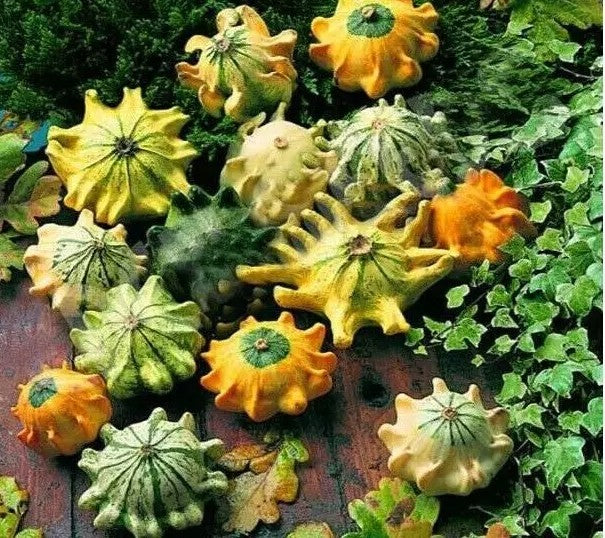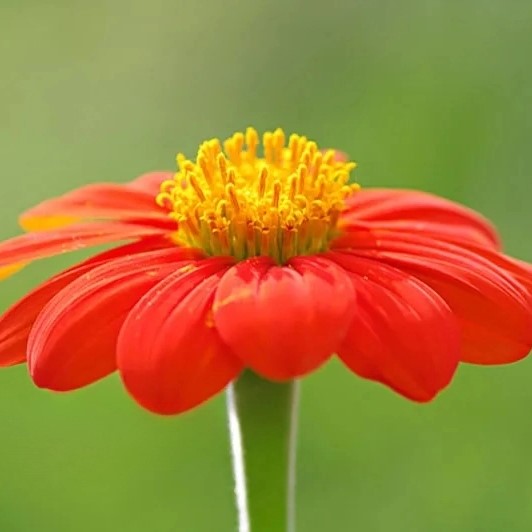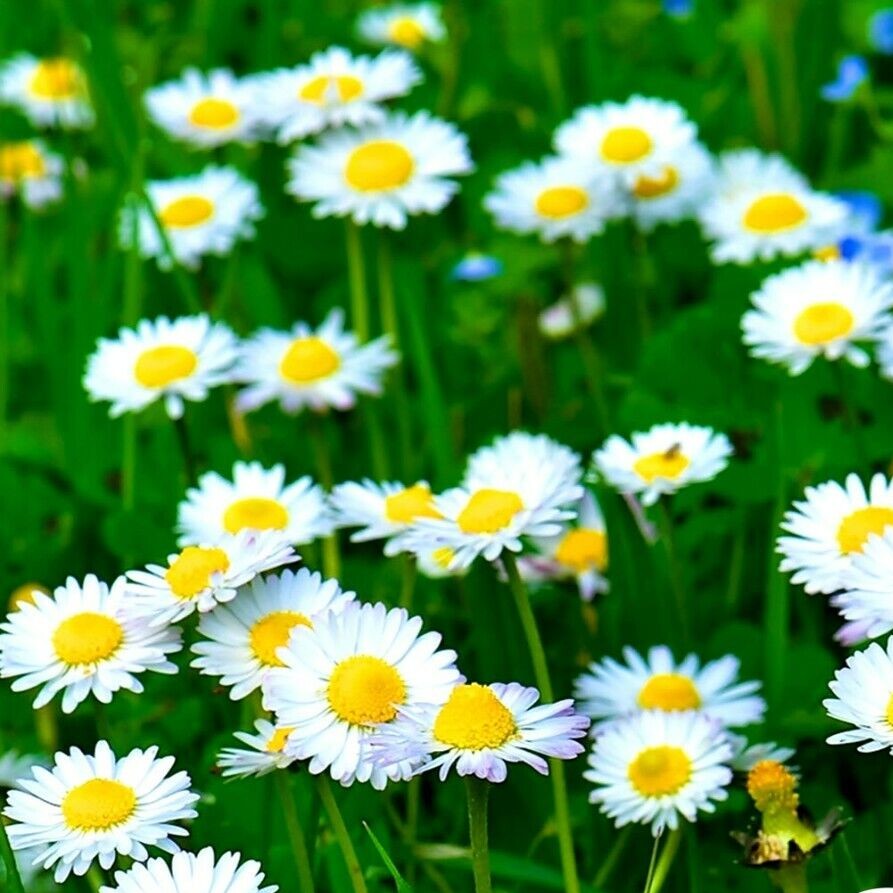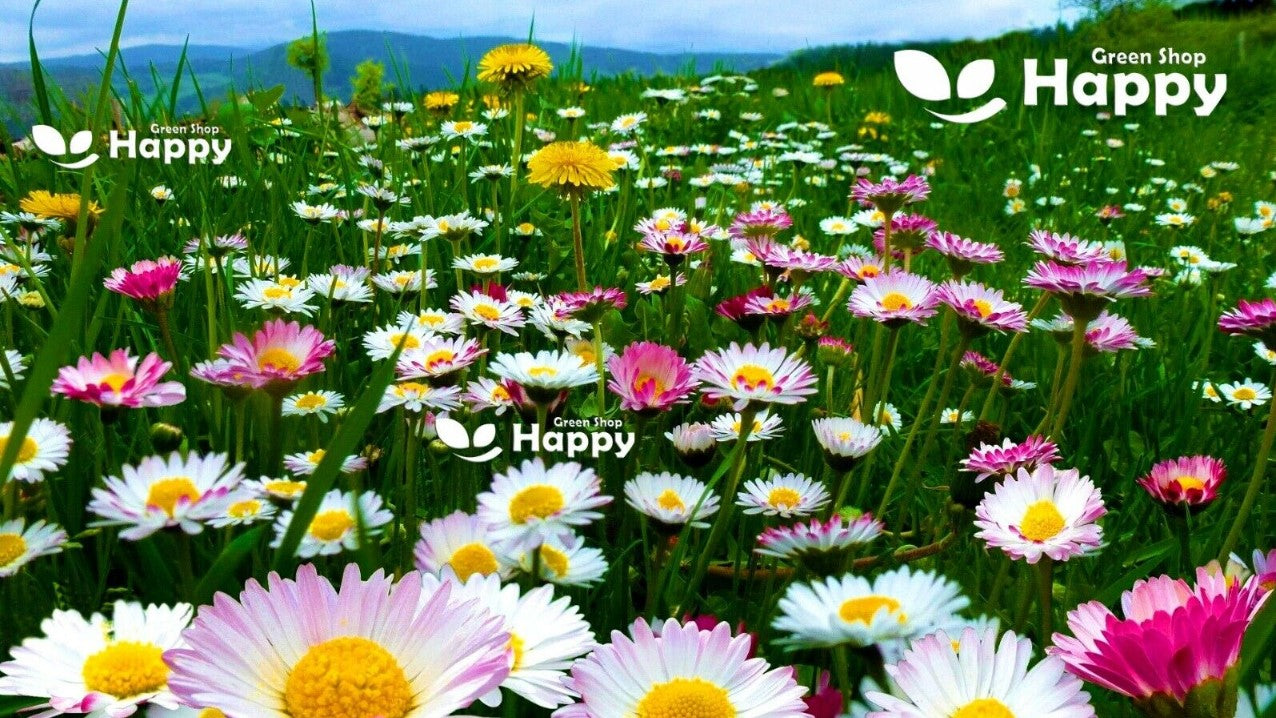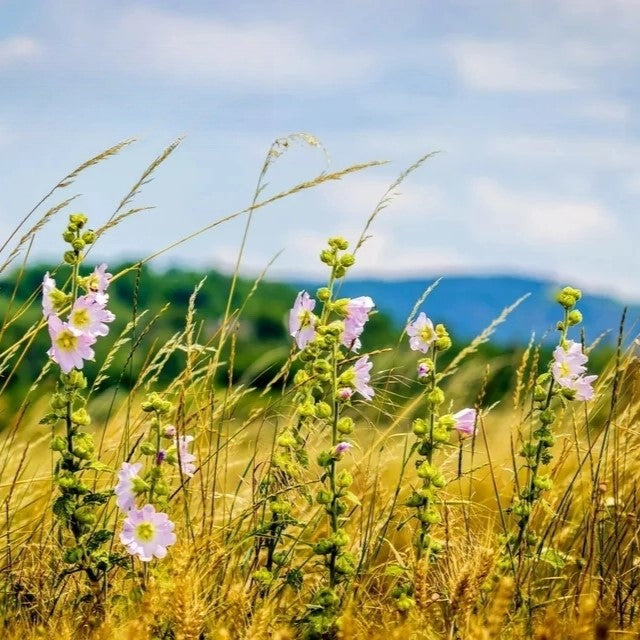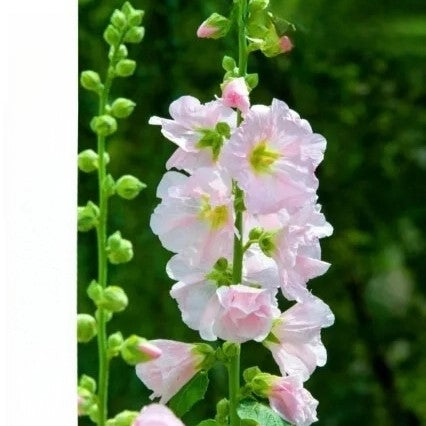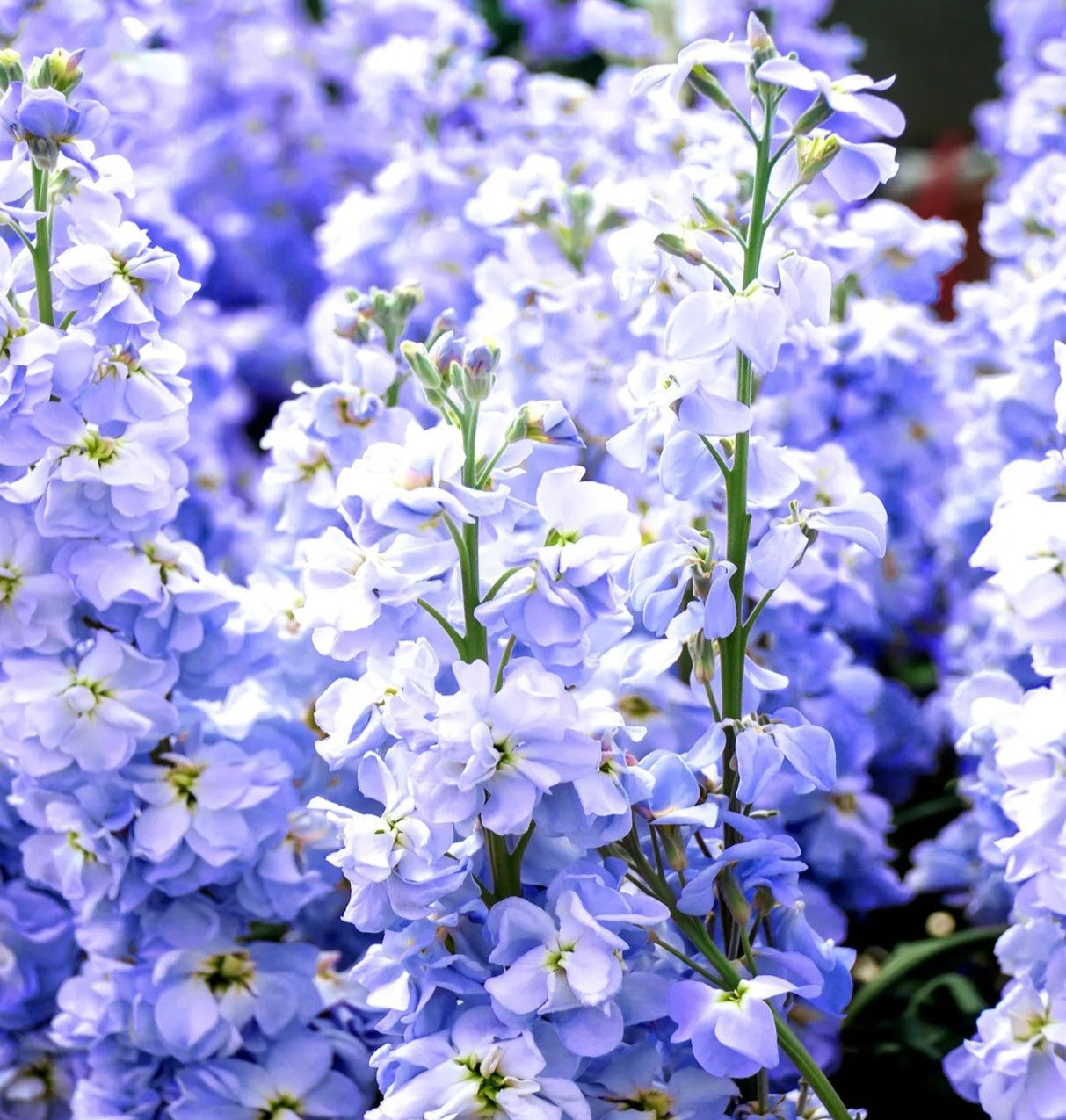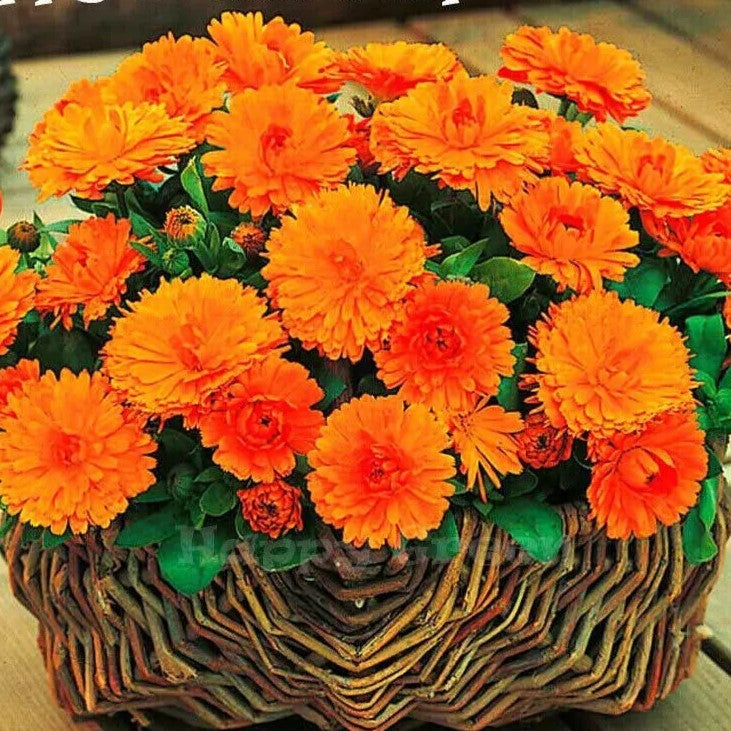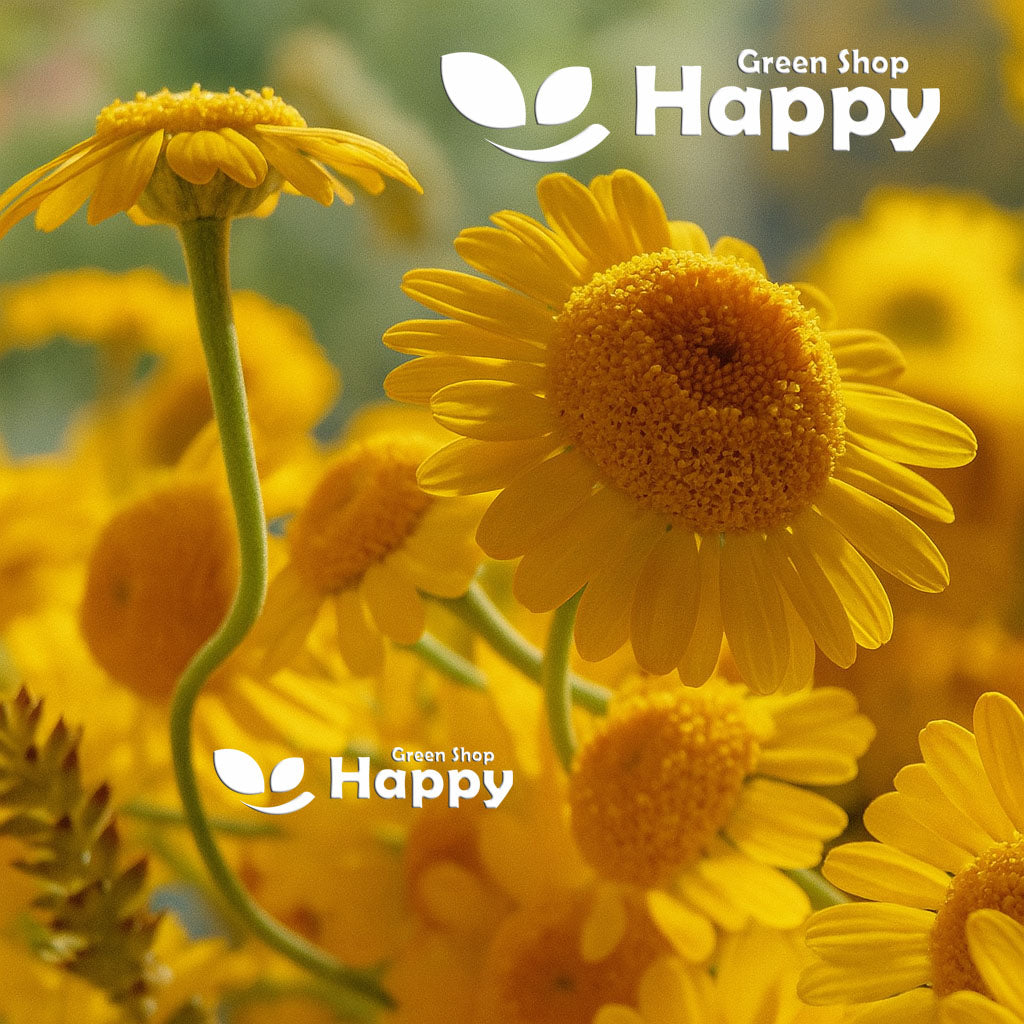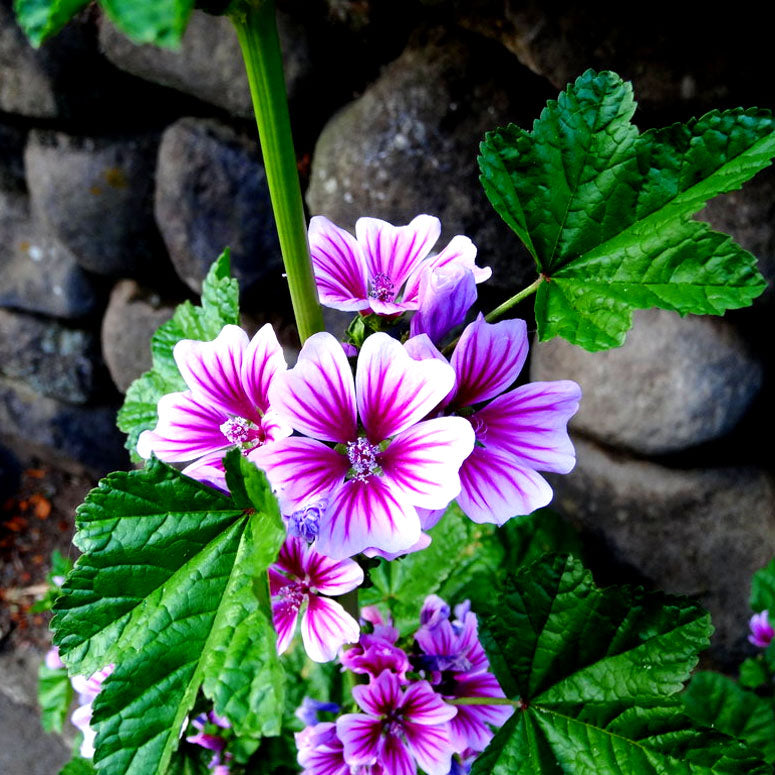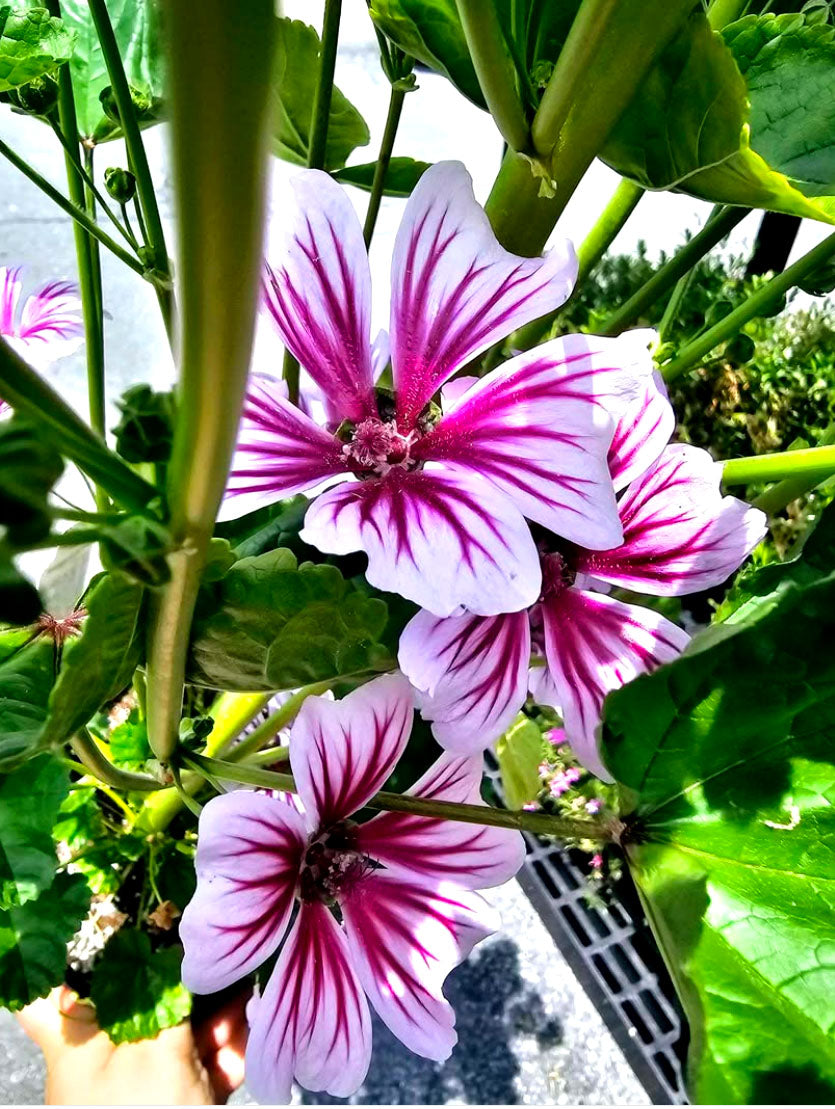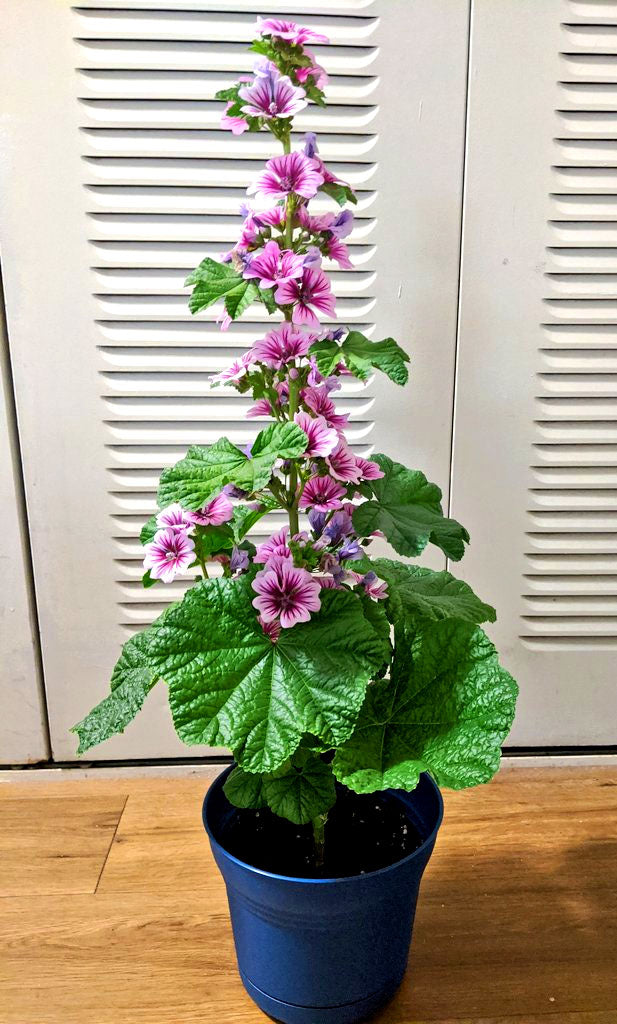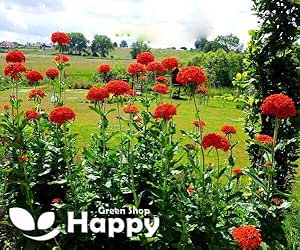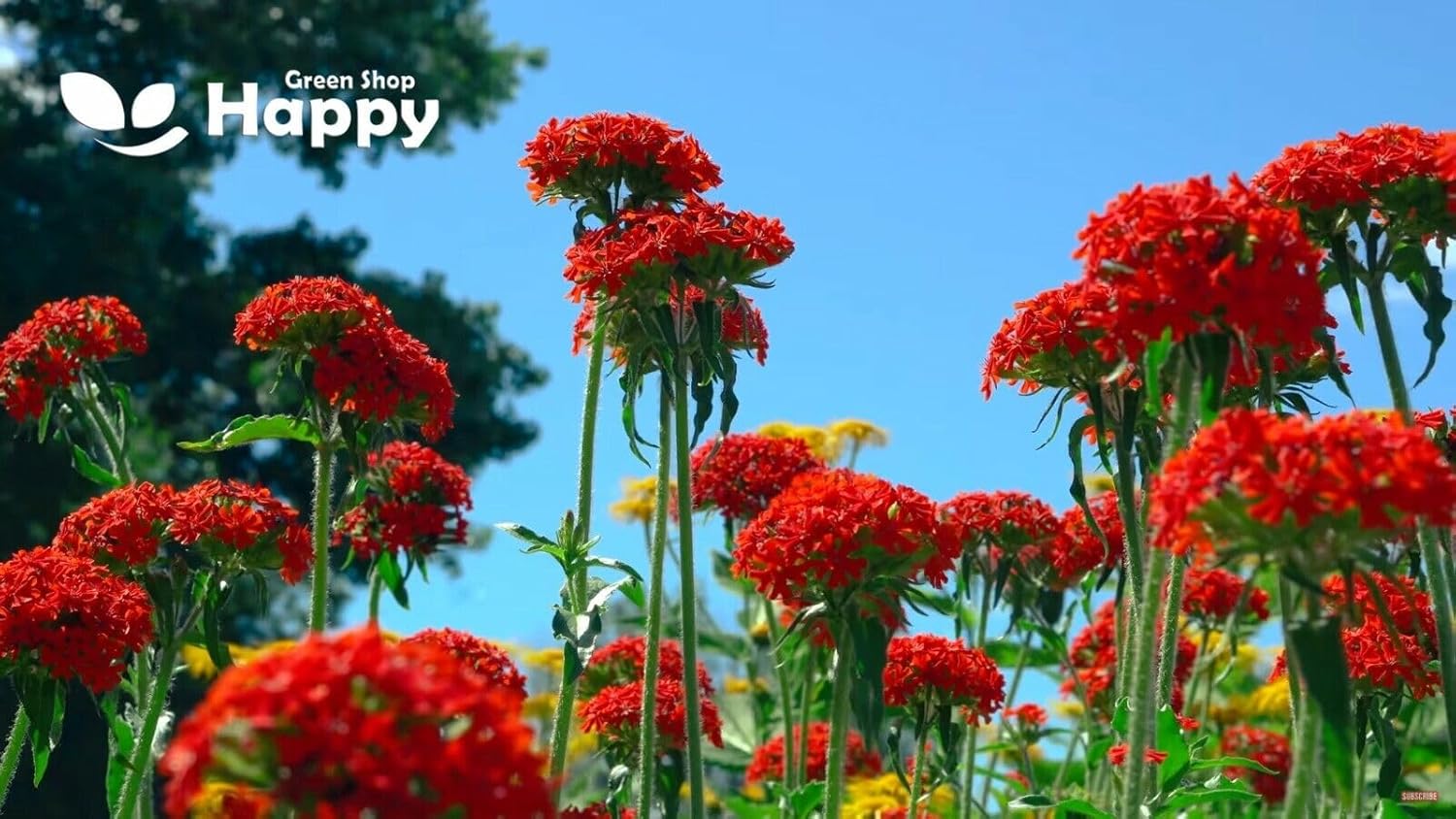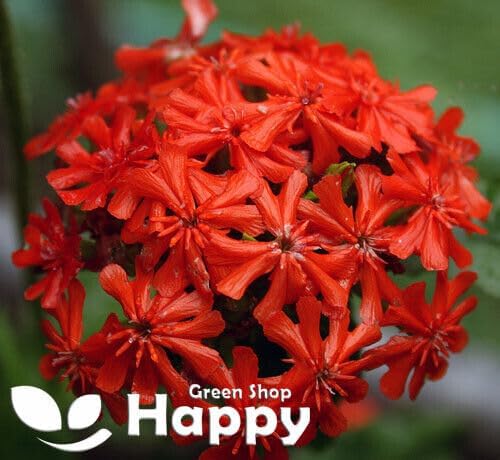Sort by:
351 products
351 products
Meadow Sage – Seeds (Salvia pratensis)
Meadow Sage (Salvia pratensis) is a hardy perennial wildflower with elegant spikes of deep violet-blue blooms. Highly attractive to bees, butterflies, and other beneficial insects, it adds natural beauty and biodiversity to any garden. Long-flowering and low-maintenance, this sage is ideal for wild meadows, borders, and pollinator-friendly plantings.
Why Grow Meadow Sage?
-
Striking violet-blue flower spikes
-
Attracts bees, butterflies, and pollinators
-
Hardy, drought-tolerant perennial
-
Low-maintenance and long-lasting
Key Features
-
Type: Perennial
-
Height: 40–70 cm
-
Spread: 30–40 cm
-
Flowering: June–August
-
Position: Full sun
-
Soil: Well-drained, moderately fertile
Ideal For
-
Wildflower meadows
-
Pollinator-friendly gardens
-
Naturalized plantings
-
Sunny borders and cottage gardens
Sowing & Growing
-
Sow indoors: February–April in trays/pots
-
Germination: 14–21 days at 18–20°C
-
Transplant outdoors: After last frost
-
Direct sow outdoors: April–June or September
-
Spacing: 30–40 cm apart
Tip: Cutting back after flowering encourages a second flush of blooms.
Mexican Sunflower Scarlet Red Seeds (Tithonia speciosa)
The Mexican Sunflower ‘Scarlet Red’ (Tithonia speciosa) is a bold, heat-loving annual that produces masses of large, daisy-like blooms in brilliant scarlet-red. A true magnet for butterflies, bees, and hummingbirds, this tall and vibrant flower adds fiery color to borders, wildlife gardens, and cutting displays. With its long flowering season and easy care, it thrives in sunny spots and poor soils.
Why Grow Mexican Sunflower ‘Scarlet Red’?
-
Striking scarlet-red blooms up to 8 cm across
-
Loved by pollinators and beneficial insects
-
Tall, branching plants for a dramatic display
-
Thrives in heat, sun, and poor soil
Key Features
-
Botanical name: Tithonia speciosa
-
Type: Half-hardy annual
-
Height: 120–150 cm
-
Spread: 60–75 cm
-
Flowering: July–October
Ideal For
-
Cottage and wildlife gardens
-
Pollinator-friendly plantings
-
Tall borders and backdrops
-
Cut flower arrangements
Sowing & Growing
-
Sow indoors: March–April, 0.5 cm deep in trays or pots
-
Transplant outdoors after frost, spacing 40–50 cm apart
-
Sow outdoors: May, directly where they are to grow
-
Prefers full sun and well-drained soil
Meadow English Daisy White – Timeless Cottage Garden Beauty
Meadow English Daisy White produces neat rosettes of dark green foliage topped with charming pure-white, yellow-centred blooms. These low-growing perennials are perfect for edging, rock gardens, lawns, and spring bedding. Flowering in early spring through summer, they bring a fresh, classic look to garden spaces and are loved by pollinators.
What Makes It Special
-
Classic pure-white flowers with sunny yellow centres
-
Early spring to summer blooms for fresh garden color
-
Low-growing, easy-care perennial
-
Ideal for naturalising in lawns and meadows
-
Loved by bees and butterflies
Key Features
-
Height: 10–15 cm – compact and neat
-
Hardy perennial – returns year after year
-
Excellent for early-season pollinators
-
Works well in borders, pots, and rock gardens
-
Versatile and adaptable to many soil types
Ideal For
-
Lawns, meadows, and naturalised plantings
-
Cottage and wildlife-friendly gardens
-
Rock gardens and path edging
-
Early-spring bedding displays
Sowing
-
Sow in trays or direct from spring to early summer
-
Press seeds gently into the surface – do not cover (light helps germination)
-
Germination: 14–21 days at 15–20°C
-
Space plants 15–20 cm apart
-
Prefers full sun to partial shade and moist, well-drained soil
Marsh Mallow – Seeds (Althaea officinalis)
Marsh Mallow is a hardy perennial herb known for its tall, elegant growth and soft, velvety leaves. Traditionally valued for its medicinal properties, its roots and leaves can be used in herbal remedies, teas, and natural skincare preparations. The plant also produces attractive pale pink flowers that add charm to herb and cottage gardens.
Ideal for garden beds, borders, and natural herbal plots, Marsh Mallow is easy to grow and low-maintenance once established.
How to Grow
-
Sow indoors: February – April
-
Sow outdoors: April – May
-
Depth: 0.5–1 cm
-
Spacing: 40–50 cm between plants
-
Position: Full sun to partial shade
-
Soil: Fertile, well-drained, moist
-
Watering: Regular watering until established
Key Features
-
Hardy perennial herb with medicinal and culinary uses
-
Soft, velvety leaves and pale pink flowers
-
Ideal for teas, herbal remedies, and natural skincare
-
Low-maintenance once established
-
Suitable for herb gardens, borders, and cottage gardens
Harvest
-
Harvesting period: Summer – Autumn
-
Pick leaves and flowers as needed; roots can be harvested in autumn for medicinal use.
Short Tip
For a continuous supply, harvest leaves selectively and leave some to flower for seeds.
Matthiola Stock Ten Week Light Blue – Seeds (Matthiola incana)
Matthiola Stock Ten Week Light Blue (Matthiola incana) is a charming annual known for its elegant spikes of soft, light blue blooms. Flowering just 10 weeks after sowing, this variety combines quick growth with long-lasting beauty. Renowned for its delightful fragrance, it is perfect for borders, beds, and containers, as well as cut flower arrangements. A cottage garden favorite, it brings both color and scent into your summer garden.
Why Grow "Ten Week Light Blue"
-
Soft light blue flower spikes with a sweet fragrance
-
Quick to flower – just 10 weeks from sowing
-
Ideal as cut flowers with long-lasting blooms
-
Compact, easy-to-grow annual
Key Features
-
Type: Half-hardy annual (Matthiola incana)
-
Height: 25–40 cm
-
Flowering: Early to late summer
-
Position: Full sun
-
Uses: Borders, cottage gardens, containers, cut flowers
Ideal For
-
Adding soft pastel color to summer borders
-
Fragrant cottage-style planting
-
Cut flower bouquets and arrangements
-
Quick and rewarding garden displays
Sowing & Growing
-
Sow indoors: February–April in trays or pots
-
Germination: 10–20 days at 15–18°C
-
Transplant outdoors after frost danger has passed
-
Space seedlings: 20–25 cm apart
-
Prefers fertile, well-drained soil in full sun
Marigold Orange 'Gitana' Seeds (Calendula officinalis)
Fill your garden with a burst of sunshine! Marigold Orange 'Gitana' is a compact variety producing masses of vivid orange blooms all summer long. Perfect for borders, pots, and cutting, these cheerful flowers are also edible—ideal for garnishes, salads, or herbal uses. Hardy and reliable, they thrive in almost any soil.
What Makes It Special
-
Dazzling deep orange flowers in abundance
-
Compact, bushy plants perfect for small spaces
-
Long-lasting blooms for months
-
Petals are edible and attractive to pollinators
Key Features
-
Pack Size: 150 seeds
-
Height: 25–35 cm
-
Annual, bushy growth habit
-
Easy to grow, even for beginners
Ideal For
-
Beds, borders, and cottage gardens
-
Pots and containers
-
Cutting gardens
-
Companion planting with vegetables
Sowing
-
Sow outdoors Mar–May in well-drained soil, full sun
-
Lightly cover seeds with fine soil
-
Germination: 7–14 days
-
Thin seedlings to 20–25 cm apart
Marguerite Yellow Daisy Seeds (Anthemis tinctoria)
Marguerite Yellow Daisy is a hardy perennial that produces bright, cheerful yellow daisy-like flowers from early summer to autumn. Its aromatic foliage and long-lasting blooms make it perfect for borders, cottage gardens, and pollinator-friendly plantings. Easy to grow and low-maintenance, it brings sunshine to any garden space.
What Makes It Special
-
Vibrant yellow daisy-like blooms all summer
-
Aromatic foliage adds texture and interest
-
Hardy, long-flowering, and attracts pollinators
Key Features
-
Botanical name: Anthemis tinctoria
-
Hardy perennial
-
Height: 50–70 cm
-
Bloom time: Early summer to autumn
Ideal For
-
Borders and cottage gardens
-
Pollinator-friendly plantings
-
Cut flowers and naturalized areas
Sowing
-
Sow indoors Feb–Apr or outdoors Apr–Jun
-
Cover seeds lightly with soil
-
Germination: 14–21 days at 18–22°C
-
Space seedlings 30–40 cm apart
-
Flowers from the second year onward
Mallow ‘Zebrina’ – Seeds
(Malva sylvestris)
Mallow ‘Zebrina’ is a striking biennial or short-lived perennial with vibrant violet-purple flowers adorned with darker purple stripes. Its long flowering season and bushy habit make it perfect for cottage gardens, borders, and pollinator-friendly plantings. Easy to grow and low-maintenance, it adds a splash of color and attracts bees and butterflies.
Why Grow Mallow ‘Zebrina’?
-
Vibrant violet-purple flowers with dark striped markings
-
Long-flowering, bushy habit
-
Attracts bees, butterflies, and other pollinators
-
Low-maintenance and easy to grow
Key Features
-
Type: Biennial / short-lived perennial
-
Height: 60–90 cm
-
Flowers: Summer to autumn
-
Position: Full sun to partial shade
-
Soil: Well-drained, moderately fertile
Ideal For
-
Cottage and mixed borders
-
Pollinator-friendly gardens
-
Cut flower arrangements
-
Low-maintenance ornamental planting
Sowing & Growing
-
Sow indoors: February–April in seed trays
-
Sow outdoors: April–May directly in prepared soil
-
Germination: 10–20 days at 18–20°C
-
Spacing: 30–40 cm apart
-
Care: Water moderately; deadhead to prolong flowering
Maltese Cross Seeds (Lychnis chalcedonica)
A striking perennial, Maltese Cross produces vibrant clusters of bright red, star-shaped flowers atop tall, sturdy stems. Hardy and long-flowering, this plant adds dramatic vertical color to borders, cottage gardens, and pollinator-friendly landscapes from early to mid-summer.
What Makes It Special
-
Eye-catching star-shaped red blooms in dense clusters
-
Tall, hardy stems provide dramatic vertical interest
-
Attracts bees and butterflies, supporting pollinator gardens
Key Features
-
Botanical name: Lychnis chalcedonica
-
Hardy perennial
-
Height: 90–120 cm (3–4 ft)
-
Bloom time: Early to mid-summer
Ideal For
-
Garden borders and cottage-style plantings
-
Pollinator-friendly and wildlife gardens
-
Adding vertical color to mixed perennial beds
Sowing
-
Sow indoors Feb–Apr or outdoors Mar–May
-
Cover lightly with soil and keep moist
-
Germination: 14–28 days at 15–20°C
-
Transplant seedlings 30–40 cm apart
-
Flowers in the first or second season after sowing
Showing 171/351



